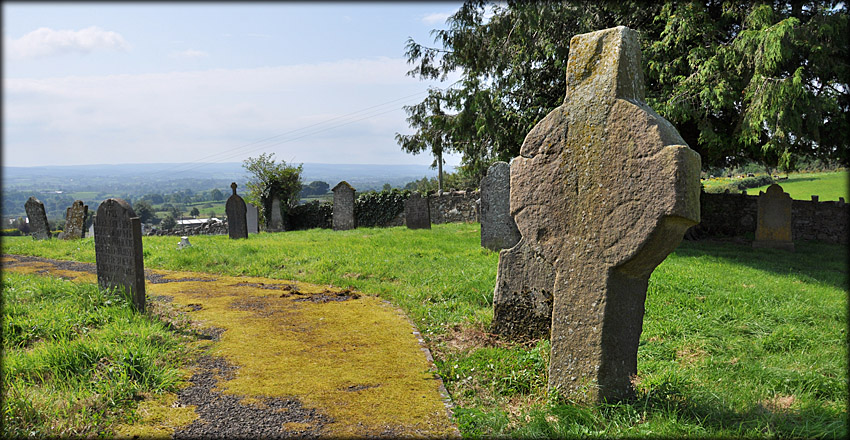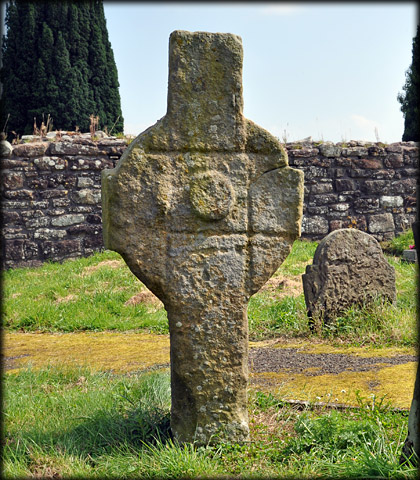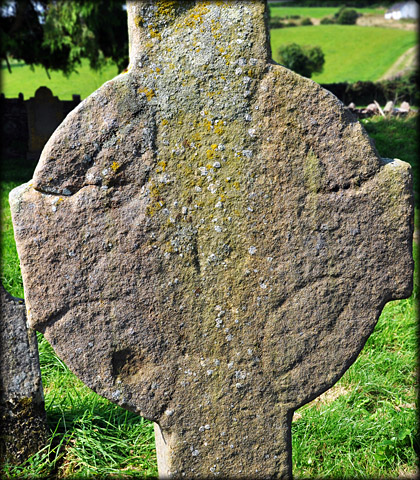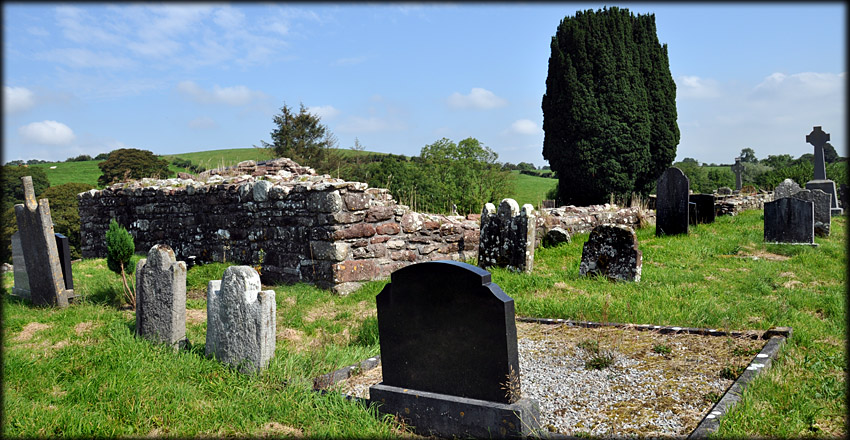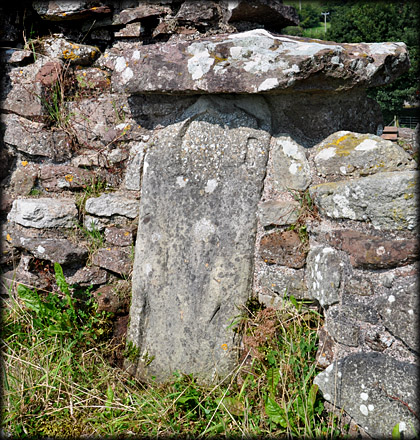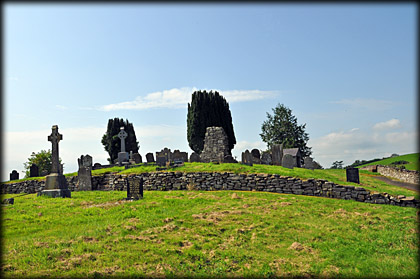Errigal Keerogue High Cross, Church and Sheela na gig The earliest church in Gort townland may have been founded by Saint Chiarog in the 6th century. In O'Hanlon's "Lives of the Saints" he believes the name may have come from Arrigle Mochiarog meaning Oratory of Mochiarog or Dachiarog. The monastery of Dachiarog is mentioned in the Annals in 810 and again in 838. The ruin of the later medieval parish church is dedicated to St Kieran, it was destroyed in 1380. Some locals believe the name is derived from St Kieran, and know the site by the name Errigal Kieran, but there is no evidence to support this theory.
On a pathway to the west of the church stands an unfinished High Cross. The sandstone cross stands 1.8 metres high and bears incised lines, indicating a ring and the curved angles of the intersections of the cross, on the east face. Short stubby arms are slightly protruding from an unpierced ring. In the centre of the west face is a low boss. The rough lines of a carved square surround the boss. These may have been guide lines for further carving by the stonemason. A crack running through the head of the cross maybe the reason the cross remains unfinished. Little remains of the Parish church, but there are many interesting 18th century gravestones present in the graveyard. This beautiful location also offers some stunning views of the surrounding countryside. |
|
|---|---|
West side |
East side |
A sheela na gig discovered at the church was moved to the Ulster Museum in Belfast. A second carved stone found leaning against the north wall of the nave is a grey sandstone slab. This intriguing stone is described by N.F.Brannon, Department of the Environment and Historic Monuments, as a tombstone, bearing a carving of a medieval knight. According to Brannon this is a replica and the original stone is held by the department in Northern Ireland. The stone also appears in an illustrated guide to the sheela-na-gigs of Ireland and Britain: The Divine Hag of the Christian Celts by Joanne McMahon and Jack Roberts. They describe it as a sheela in a squatting position with arms reaching down to the abdomen, with deeply carved indentations beneath the arms and legs. It is known as the pipe smoking sheela, a crack running from the head to a groove in the top right border of the stone, gives the impression of a pipe. It is also noted in the guide that two sheelas were present at Seir Keeran in County Offaly, another site with connections to St Ciaran. |
|
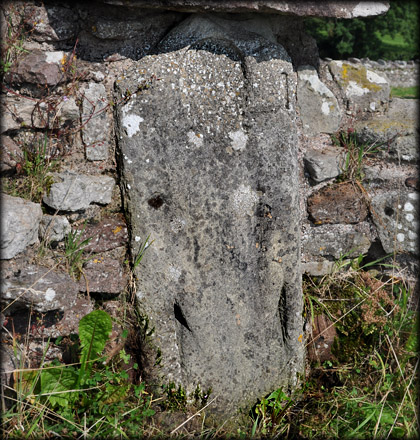 |
|
Little remains of the Parish church, but there are many interesting 18th century gravestones present in the graveyard. This beautiful location also offers some stunning views of the surrounding countryside. |
|
Situated: From Aughnacloy in Tyrone travel NE on the A5 for c.3.8 kilometres. Turn right onto Feddan Rd, About 1.5 K take a slight right then straight onto Glenhoy Rd. Finally turn right onto Errigal Rd. Discoverer Map 18: H 5849. Last visit Aug 2019. Longitude: 7° 5' 53" W Church Latitude: 54° 27' 31" N Photos: Jim Dempsey. |
|
Ref: Brannon, N. F. “A Medieval Carved Stone from Errigal Keerogue Church, County Tyrone.” Ulster Journal of Archaeology, 44/45, 1981, pp. 200–202. JSTOR, www.jstor.org/stable/20567881. |
|
